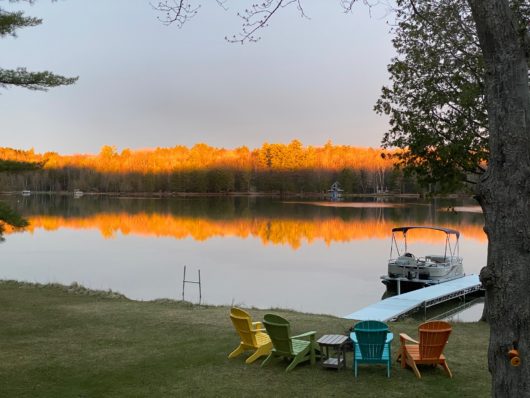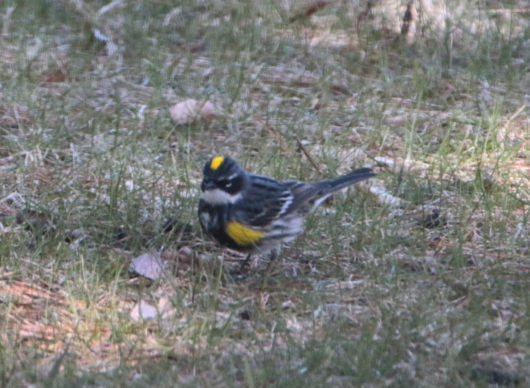Waking up to snow on the ground and ice on the plants that rim the lake during the first week of May made us pine for spring. The Adirondack chairs are out. The twigs in the fire pit await a calm day when it’s safe to burn. The boat is in. The kayak launch aid is set (the “H” about 4 feet from shore). The orange halves are hung on the trees waiting for orioles.This dawn looked more like fall. But so beautiful.
We do not have swans on Long Lake. But, wait. This Spring is different. These are definitely Mute Swans. They had the telltale lump at the top of their bill and the bills were lighter than they appear in these photos. They’re the exotic transplant seen most often in Michigan and not our homegrown Trumpeter Swans.
We’ve seen them once or twice before in about 15 years on the lake. But this quartet hung around for more than a week.
We see Common Mergansers regularly in the Spring. But Hooded Mergansers are rare. These guys were a hoot to watch. The males were puffing up their impressive crests and clearly performing for the nearby females. This female seemed unimpressed.
Here’s the pair once the male had chilled out and the female had, apparently, changed her mind.
We do not have Red-Breasted Mergansers on Long Lake. But, wait. This Spring is different. These are definitely Red-Breasted Mergansers.
It’s the male’s punk hairdo that’s the big give-away. And the female has some of the same fly-away look going on.
We have a number of warblers that put in appearances on Long Lake. But we do not have Yellow-Rumped Warblers. But, wait. This Spring is different. These are definitely Yellow-Rumped Warblers of the variety formerly known as Myrtle. You can tell it’s the Myrtle variety rather than the Audubon variety because the chin-strap is white rather than yellow.
And, yes, there is a yellow splotch on its rump. It was just such a fluttery critter that Steve couldn’t get a photo of its rump.
There was a time when Myrtle was its own species. And the somewhat similar Audubon warbler, with less distinct coloration and a yellow chin strap, were considered to be a separate species. The two species were merged by the birding universe’s powers that be. They are the only warbler that can digest the waxy berries produced by myrtle and bayberry bushes. They aren’t a rare warbler, at least not during migration. But we’ve never seen them here before.
Wouldn’t that gray, black, white, bright yellow make a great colorway for a yarn? Or an interesting way to find (or free) your fade?
It’s just not your normal Up North Michigan Spring. In so many ways, it’s not a normal Spring.










